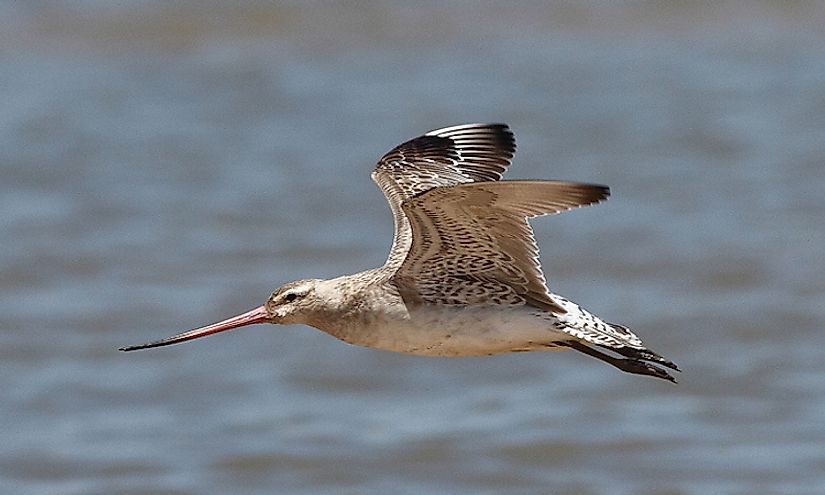A recent study speculates that migratory birds have lighter colored feathers because they reduce the risk of overheating (Kaspar Delhey, James Dale, Mihai Valcu, and Bart Kempenaers. Migratory birds are lighter coloured. Current Biology, 2021). They say “We found across nearly all species of birds, migratory species tend to be lighter colored than non-migratory species. We think that lighter plumage coloration is selected in migratory species because it reduces the risk of overheating when exposed to sunshine. Lighter surfaces absorb less heat than darker ones, as anybody wearing dark clothes on a sunny day can attest! This would be particularly important for long-distance migrants that undertake extensive flights during which they cannot stop to rest in the shade.”
The researchers quantified overall plumage lightness using bird images from the Handbook of the Birds of the World and compared the coloration with the species’ migratory behavior, while controlling for other factors known to affect plumage color such as climate and sex.

Overall, it appears that bird species get increasingly lighter as they migrate more. So, resident birds tend to be darker than short-distance migrants. Short-distance migrants are darker than bird species that travel farther. The effect was consistent across different types of birds. They saw the same pattern no matter what the size or habitat of the bird was.
The lightness of plumage coloration certainly is related to thermoregulation; it makes sense that lighter colored birds live in the desert and darker birds in colder areas. But I question whether the migratory habit has much to do with plumage color and thermoregulation. Sure, migratory birds spend more time exposed to the sun, but that would be their dorsal sides, not ventral. The migrants were darker both dorsally and ventrally, although the correlation was not as strong for dorsal coloration.
During migration the birds’ wings are spread but most of the wing is dead material (feathers) whose radiation absorption would have little effect on thermoregulation.
This study makes me wonder why there is less melanin (dark pigment) in the plumage of migratory birds. Melanin strengthens feathers and you would think migratory birds would have more melanin in their plumage simply because they are stressing them more. Another study notes that melanin actually helps to reduce drag on flight feathers by making their surfaces hotter. Studies on albatrosses indicate that, for example, drag is reduced by 50% and lift is increased by 70% due to the presence of melanin in the wing tips. To explain simply, the warmer air over the darker wing is less dense – the molecules are farther apart.
There are additional arguments and ideas about melanin deposition: for example, the synthesis of melanin may be metabolically expensive, so it makes sense that migratory birds, requiring a lot of energy, would minimize melanin production.
All this somewhat contradictory information goes back to my recent blog on ornithological research. No matter how well you do a study, even if you come up with reasonable, substantiated conclusions, you are likely to generate more questions for future studies to address.